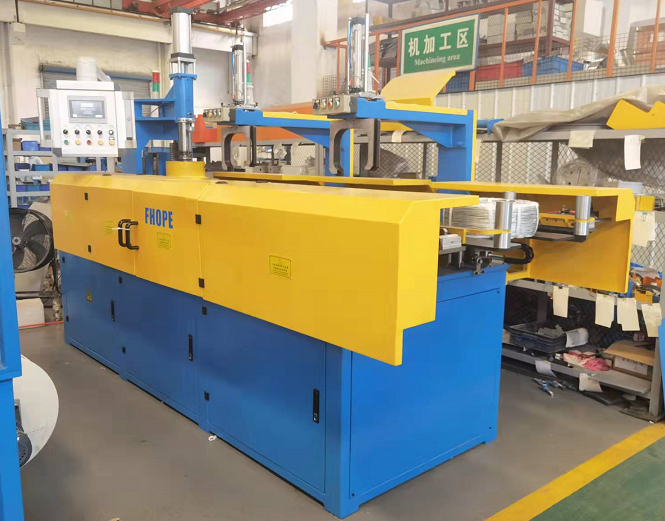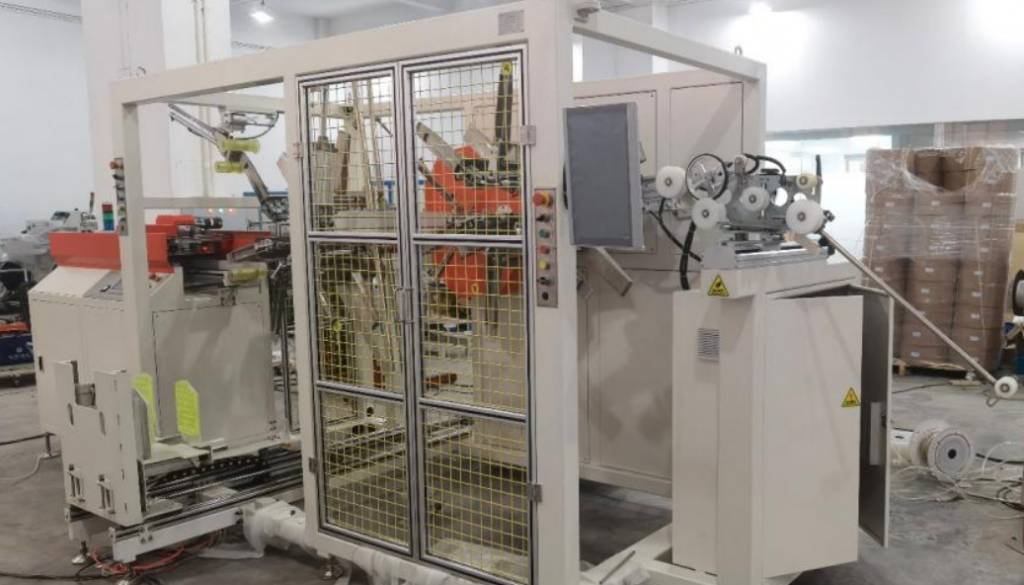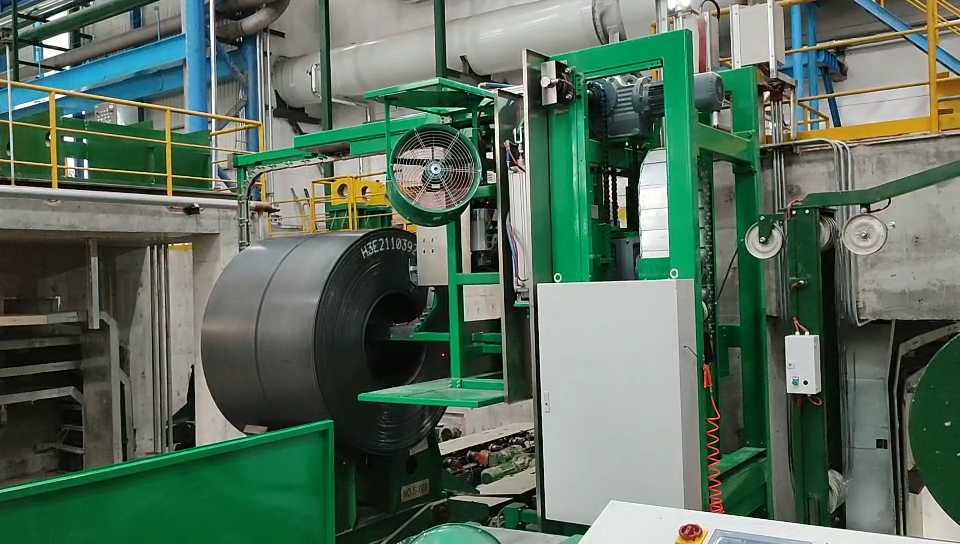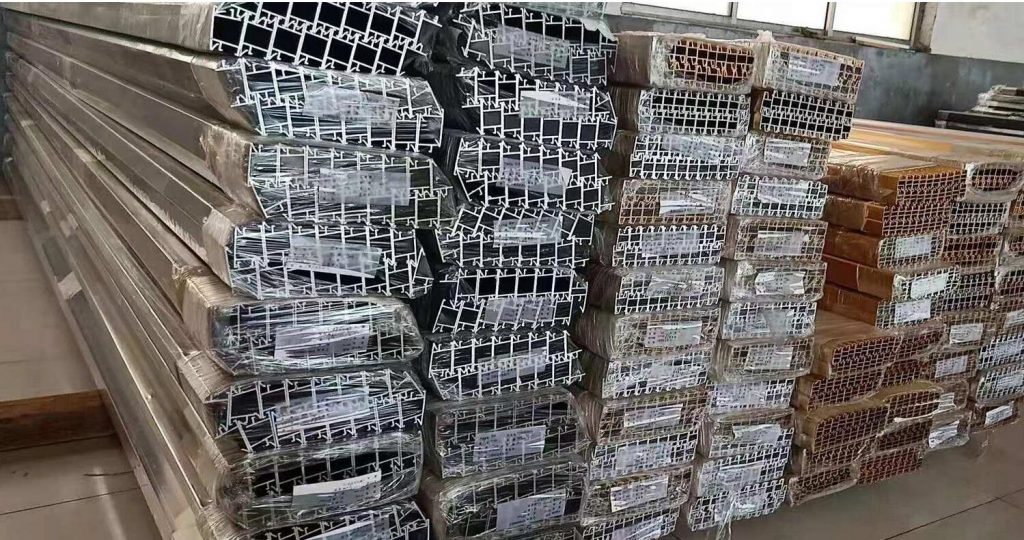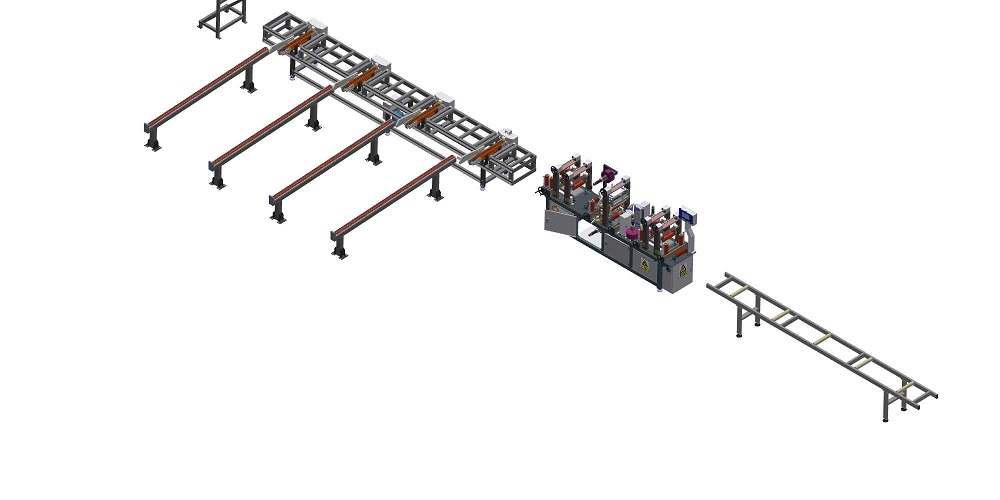In today's demanding industrial environments, efficient and secure packaging is paramount. For businesses handling coiled products – such as steel, aluminum, wire, cable, or hose – manual strapping methods can be time-consuming, labor-intensive, and potentially inconsistent. Automatic coil strapping machines represent a significant technological advancement, offering enhanced speed, reliability, and safety in securing coiled loads for transport and storage. This article provides a technical overview of these essential machines, exploring their design, operation, specifications, and the tangible benefits they bring to distribution and manufacturing operations.
1. The Imperative for Automation in Coil Strapping
Manual strapping of heavy or irregularly shaped coils presents several challenges:
- Labor Costs & Availability: Requires significant manual effort, increasing operational costs and dependency on available labor.
- Safety Risks: Manual tensioning and handling of strapping materials can pose risks of repetitive strain injuries or cuts.
- Inconsistent Tension: Manual application can lead to variations in strap tension, potentially compromising load stability.
- Throughput Limitations: Manual processes inherently limit the speed at which coils can be packaged, creating bottlenecks.
Automatic coil strapping machines directly address these issues, providing a streamlined, consistent, and faster solution crucial for high-volume operations.
2. Core Operational Principles and Strapping Technology
Automatic coil strapping machines typically operate through a synchronized sequence of actions, often integrated into a larger production or packaging line:
- Coil Positioning: The coil is indexed into the strapping station, often via conveyors or turntables. Sensors detect its presence and precise position.
- Strap Feeding: The strapping head feeds the required length of strap (typically PET or steel) around the circumference or through the eye of the coil, guided by a strap arch or track system.
- Tensioning: The machine applies a pre-set, consistent tension to the strap, securing the coil tightly. This tension is often adjustable via the control panel to suit different product requirements.
- Sealing: The strap ends are joined using a reliable sealing method. Common methods include:
- Heat Seal (for PET): Uses friction or heat to weld the strap ends together.
- Mechanical Seal/Notch Joint (for Steel): Uses a metal seal crimped onto the overlapping strap ends or creates a joint by punching and interlocking the strap itself.
- Cutting: The strap is cleanly cut near the seal, completing the cycle.
- Coil Ejection/Transfer: The strapped coil is moved out of the station, making way for the next one.
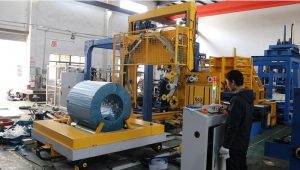
steel wire coil packing machine 2023 3. Key Design Features and Structural Components
The robustness and reliability of an automatic coil strapper depend heavily on its design and the quality of its components:
- Frame and Structure: Typically constructed from heavy-gauge welded steel to withstand demanding industrial environments and the forces involved in strapping heavy coils. Durability and stability are key design considerations.
- Strapping Head: The heart of the machine, responsible for feeding, tensioning, sealing, and cutting the strap. Designs vary based on strap type (PET/Steel) and required performance. Look for hardened components in high-wear areas.
- Conveying System/Turntable: Facilitates the movement of coils into and out of the strapping zone. Options include roller conveyors, chain conveyors, or rotating turntables for applying multiple straps at different orientations without moving the entire coil line.
- Strap Dispenser: Holds the coil of strapping material and ensures smooth, tangle-free feeding to the strapping head. Often includes features to signal low strap levels.
- Control System: Usually managed by a Programmable Logic Controller (PLC) with a Human-Machine Interface (HMI) touchscreen. Allows operators to:
- Select operating modes (automatic, manual, maintenance).
- Adjust parameters (strap tension, number of straps, feed/retract speeds).
- View diagnostics and error messages.
- Integrate with upstream and downstream equipment.
- Safety Features: Essential for operator protection. Includes emergency stops, safety interlocks on access doors/panels, light curtains, and physical guarding around moving parts, complying with relevant safety standards (e.g., [Link to relevant OSHA or ISO standard]).
4. Technical Specifications: A Comparative Overview
Selecting the right machine involves matching its capabilities to specific application needs. Here’s a comparison of typical specification ranges:
| Parameter | Typical Range (Example) | Importance |
|---|---|---|
| Coil Outer Diameter | 500 mm - 2500 mm | Determines the maximum size of coil the machine arch can accommodate. |
| Coil Inner Diameter | 300 mm - 800 mm | Relevant for machines strapping through the eye of the coil. |
| Coil Width | 100 mm - 1500 mm | Maximum width the machine and conveyor system can handle. |
| Coil Weight | Up to 5,000 kg (or higher) | Dictates the required structural integrity and conveyor load capacity. |
| Strap Type | PET (Polyester) / Steel | Choice depends on required strength, elasticity, cost, and product type. |
| Strap Width | PET: 12mm - 19mm / Steel: 16mm - 32mm | Wider straps generally offer higher break strength. |
| Strap Thickness | PET: 0.6mm - 1.2mm / Steel: 0.5mm - 1.0mm | Affects strap strength and stiffness. |
| Tension Range | 500 N - 8,000 N (Adjustable) | Crucial for ensuring load security without damaging the product. |
| Cycle Time | 15 - 40 seconds per strap | Key indicator of throughput capacity. Depends on coil size and setup. |
| Sealing Method | Heat Seal / Friction Weld / Notch Joint | Efficiency and joint strength vary by method and strap type. |
| Power Supply | 380V/480V, 3-Phase, 50/60Hz | Standard industrial power requirements. |
| Control System | PLC (e.g., Siemens, Allen-Bradley) | Influences integration capabilities, diagnostics, and user interface. |
Note: These are illustrative ranges. Specific models will have precise specifications. Always consult manufacturer data sheets for exact figures.
5. Operational Modes and User Experience
Modern automatic coil strappers are designed for ease of use and maintenance:
- Automatic Mode: The machine operates continuously as part of an automated line, strapping coils as they arrive based on sensor inputs. Ideal for high-throughput scenarios.
- Manual Mode: Allows operators to initiate strapping cycles individually via the HMI or push buttons. Useful for setup, testing, maintenance, or lower volume applications.
- HMI Interface: Intuitive touchscreens provide clear status information, allow easy parameter adjustments (e.g., tension levels for different product SKUs), and offer detailed diagnostic logs for troubleshooting.
- Maintenance: Design considerations often include easy access to the strapping head and wear parts, clear lubrication points, and self-diagnostic capabilities to minimize downtime. Quick strap coil changes are also a key usability factor. From personal experience integrating and observing these machines, a well-designed HMI significantly reduces operator training time and speeds up recovery from minor interruptions like strap misfeeds.
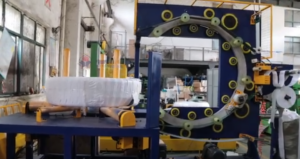
big coil wrapping machine 6. Selecting the Right Automatic Coil Strapping Machine
Choosing the optimal machine requires careful consideration of several factors:
- Product Specifications: Coil dimensions (ID/OD/Width), weight, and material type.
- Throughput Requirements: How many coils per hour/shift need to be strapped? This dictates required cycle speed.
- Strapping Material: PET (often preferred for elasticity and lower cost) or Steel (for high-strength requirements or sharp edges)?
- Number and Orientation of Straps: Does the coil require radial straps, through-the-eye straps, or both?
- Integration Needs: Will the machine be standalone or integrated into a fully automated packaging line? Requires compatible communication protocols (e.g., Ethernet/IP, Profinet).
- Budget: Initial investment versus long-term operational savings (labor, efficiency, safety).
- Supplier Support: Availability of spare parts, technical support, and service technicians.
7. Quantifiable Benefits: ROI and Safety Enhancements
Investing in an automatic coil strapping machine delivers measurable returns:
- Reduced Labor Costs: Frees up personnel previously assigned to manual strapping for other value-added tasks.
- Increased Throughput: Significantly faster cycle times compared to manual methods boost overall packaging capacity.
- Improved Load Security: Consistent, optimal strap tension enhances package integrity during handling and transit, reducing product damage.
- Material Savings: Precise strap feeding and tensioning can optimize strap usage compared to manual guesswork.
- Enhanced Worker Safety: Eliminates manual handling, tensioning, and cutting risks, contributing to a safer work environment and potentially lowering insurance premiums.
8. Typical Industry Applications
Automatic coil strapping machines are indispensable in various sectors, including:
- Metals Industry: Steel mills, aluminum processors, service centers (strapping slit coils, wire rod coils).
- Wire & Cable Manufacturing: Securing large reels and coils of electrical wire and fiber optic cables.
- Hose and Tube Production: Packaging coils of industrial hoses, pipes, and tubing.
- Building Materials: Strapping coils of roofing materials or other coiled construction products.
Conclusion
Automatic coil strapping machines are sophisticated pieces of equipment engineered to meet the rigorous demands of modern industrial packaging. By automating the strapping process, they offer substantial improvements in efficiency, consistency, load security, and operator safety compared to manual methods. Understanding the core technology, key components, technical specifications, and operational features allows businesses to select and implement the right solution, ultimately enhancing their packaging operations and contributing positively to the bottom line. The integration of such automation is a key step towards optimizing workflow within distribution centers and manufacturing facilities dealing with coiled products.

